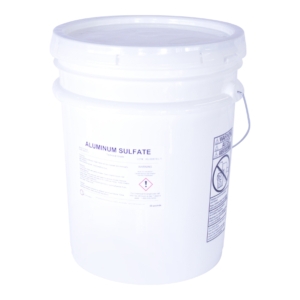Description
Copper Sulfate
From Wikipedia, the free encyclopedia
Copper(II) sulfate (“sulphate” in most Commonwealth nations) is the chemical compound with the formula CuSO4. This salt exists as a series of compounds that differ in their degree of hydration. The anhydrous form is a pale green or gray-white powder, while the pentahydrate, which is most commonly encountered salt, is bright blue. This hydrated copper sulfate occurs in nature as the mineral is called chalcanthite. The archaic name for copper(II) sulfate is “blue vitriol” or “bluestone”
Structure
In the pentahydrate, copper(II) is bonded to four molecules of water and to the oxygen atoms of two sulfate anions. The fifth water is not coordinated, but links the sulfate anions via hydrogen bonding. In the trihydrate, all three water molecules are bonded as well as one oxygen atom of the sulfate, to define a distorted square planar arrangement, two more oxygen ligands are ca. 2.4 Å distant from copper. In the anhydrous form, copper is bound to four oxygen atoms of sulfate (rCu-O = 1.9-2.0Å) and more weakly bonded to two other oxygen atoms (2.4 Å). A monohydrate is also known.
Preparation
Since it is available commercially, copper sulfate is usually purchased, not prepared in the laboratory. It can be made by the action of sulfuric acid on a variety of copper(II) compounds, for example copper(II) oxide. Copper(II) sulfate decomposes before melting. The common pentahydrate form dehydrates, losing four water molecules at 110 °C and all five at 150 °C. At 650 °C, copper(II) sulfate decomposes into Copper(II) oxide (CuO) and Sulfur trioxide (SO3). When heated in an open flame the crystals are dehydrated and turn grayish-white.
Uses
In organic synthesis
Copper sulfate is employed in organic synthesis. The anhydrous salt catalyses the transacetalization in organic synthesis. The hydrated salt reacts with potassium permanganate to give an oxidant for the conversion of primary alcohols.
In school chemistry demonstrations
Copper sulfate is a commonly included chemical in children’s chemistry sets and is often used in high school crystal growing. and copper plating experiments. Due to its toxicity, it is not recommended for small children. Copper sulfate is often used to demonstrate an exothermic reaction, in which steel wool or magnesium ribbon is placed in an aqueous solution of CuSO4. It is used in school chemistry courses to demonstrate the principle of mineral hydration. The pentahydrate form, which is blue, is heated, turning the copper sulfate into the anhydrous form which is white, while the water that was present in the pentahydrate form evaporates. When water is then added to the anhydrous compound, it turns back into the pentahydrate form, regaining its blue color.
As an herbicide, fungicide, pesticide
Copper sulfate pentahydrate is a fungicide. Mixed with lime it is called Bordeaux mixture to control fungus on grapes and other berries. Its use as an herbicide is not agricultural, but instead for control of invasive exotic aquatic plants and the roots of other invasive plants near various pipes that contain water. A dilute solution of copper sulfate is used to treat aquarium fish of various parasitic infections, and is also used to remove snails from aquariums. However, as the copper ions are also highly toxic to the fish, care must be taken with the dosage. Most species of algae can be controlled with very low concentrations of copper sulfate.
Safety
Copper sulfate is harmful by inhalation or ingestion, and can cause dermatitis with prolonged exposure. It is also toxic to aquatic organisms and may cause long term damage in the environment.






